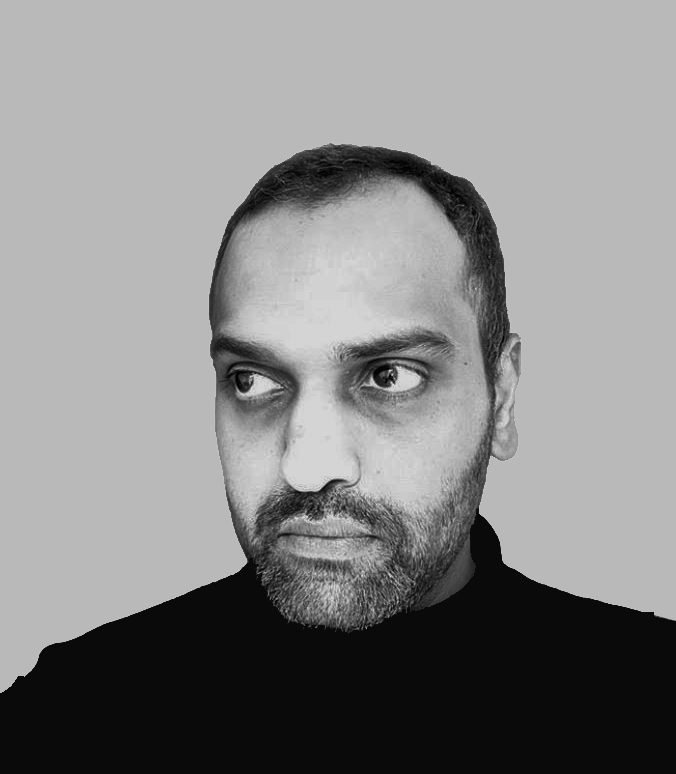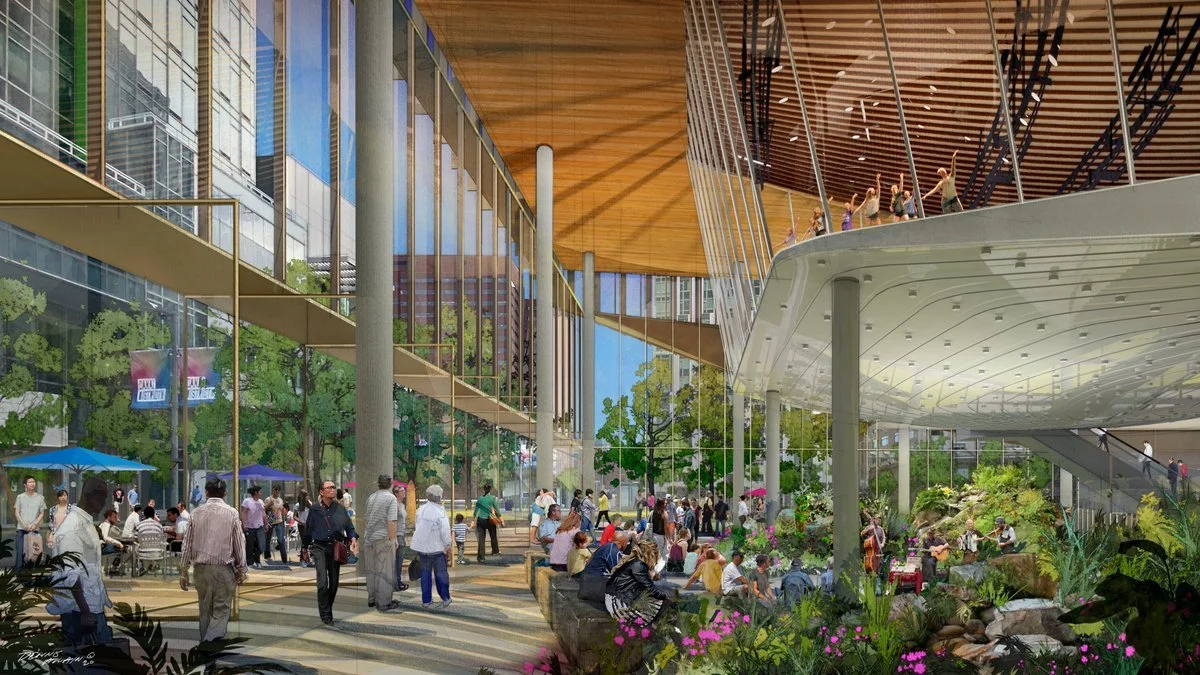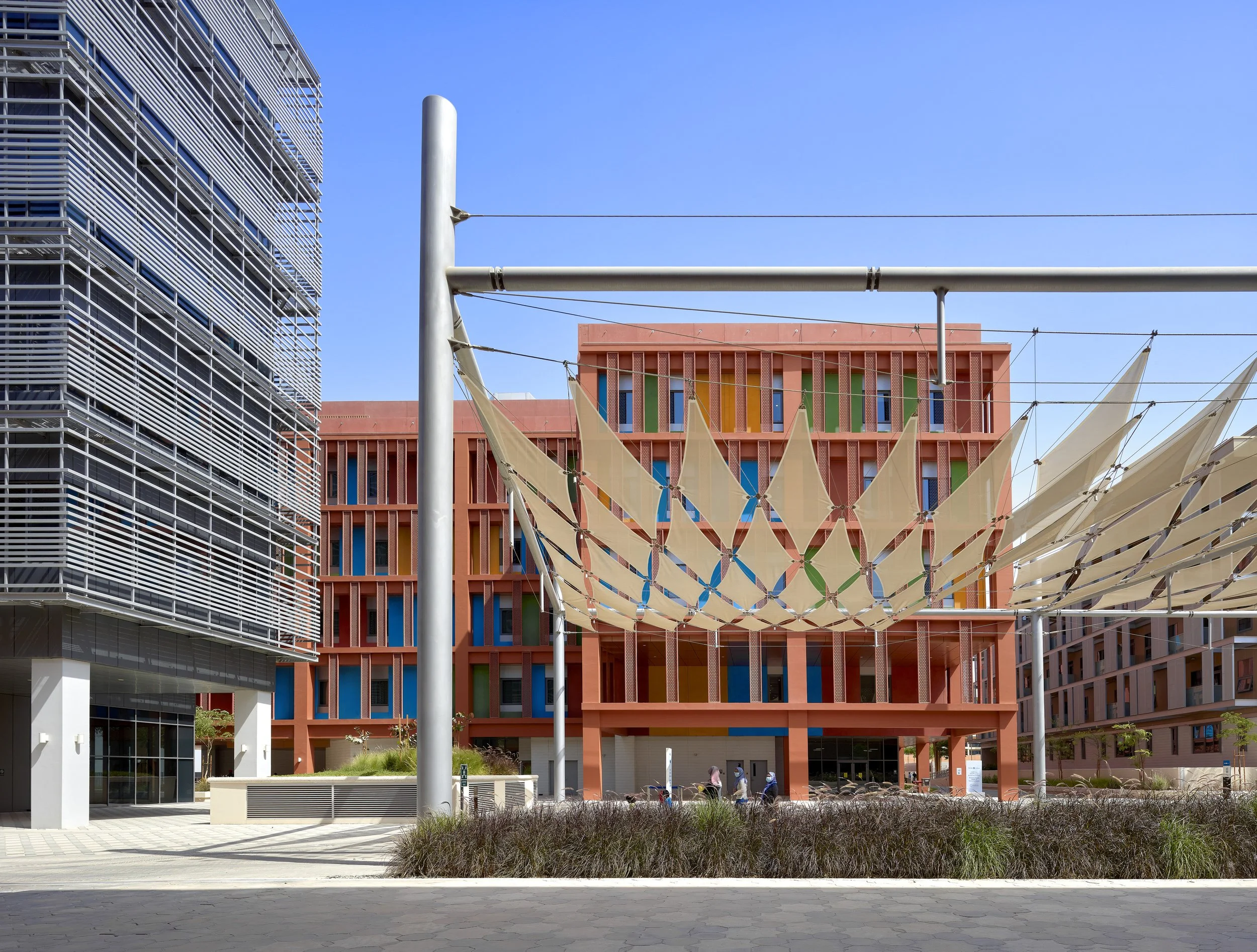In Conversation with Kishore Varanasi
This transcript is an informal conversation between Dan Lu (MAUD ‘21), Naksha Satish (MAUD ‘22) and Kishore Varanasi on July 28th, 2021.
The Director of Urban Design at CBT. Kishore’s work embraces emerging societal forces such as climate change, environmental consciousness, the sharing economy, and innovation culture to create an unparalleled quality of urban life.
Naksha Satish (NS):
What have been some of the inspirations that you bring from India? And how did your personal background impact your practice?
Kishore Varanasi (KV):
Indeed, our general thinking in life is very much influenced by where we came from. I grew up in a very small town on the east coast of India about the size of Cambridge, MA in population. It's a triangular delta surrounded by two tributaries of a river and the Bay of Bengal with fertile agricultural land. Everything we consumed was fresh and produced within the region. We also lacked basic infrastructure, which meant we had to be very resourceful in not generating any waste. We fully utilized everything we brought home in multiple ways, even in how we reused the peels of vegetables. We were also constantly connected to nature. By nature, I don’t mean just landscapes, but rather the rhythms and systems of nature, and how we interacted with and contributed to mutual well-being. My parents were also very engaged in the community and active in social issues; concerns about diversity and equity were a very important part of my upbringing. This attention to reducing waste, honoring our connection with nature, and advocating for human wellbeing taught me to examine everything systematically and within its complete life cycle.
At the start of my career, I worked with Balakrishna Doshi for a short period of time and it profoundly changed my perspective on many things related to design, especially the idea of architecture and cities as the backdrop to life instead of the foreground. How might we think about this choreography of life and how might we, as designers, fit into this process? These are very important questions.
Indian cities are very vibrant and dynamic, and the line between informality and chaos is often ambiguous. This experience in India taught me that humans are what we are designing for, not cars, pipes or sewage systems. I always start designing by thinking about people, the nature of the environment and how we can create space for people to shape the future of cities.
Dan Lu (DL):
What was your journey from school to practice like and did you plan everything from the beginning?
KV:
Nothing was planned from the beginning, several things came into alignment over and over again for me. After graduating from MIT, I worked with a real estate developer and very soon realized that my passion lies in design, particularly the agency that designers have to impact cities and society. I came to CBT when it did not have a formal urban design practice to work on the Cambridge Crossing master plan. I was fortunate to land at CBT which is entrepreneurial and often acts as a platform to launch motivated individuals – and I took advantage of this and Cambridge Crossing Project to build the practice that it is today.
DL:
You started the urban design team at the office about 20 years ago and began large projects such as Cambridge Crossing when you were a young designer. How did you navigate such a big project as a young designer without a formal department at your office?
KV:
First, both the client and the city were very open to experimenting with forward thinking ideas in urban design even 20 years ago. Secondly, the project has been developed with great collaborators and Ken Greenberg is one of them. With Ken’s help, I was able to learn and grow very fast even without a formal urban design practice at CBT. CBT on the other hand has an extraordinary wealth of knowledge around designing responsible buildings in the city. We also hosted an international design competition early in the project. It gave me access to testing our plan with some of the best minds in the world. Fortunately, I was able to be on this project with three developers through three market cycles, over the past twenty years. However, each owner was willing to engage with us in the process and allow us the opportunity to experiment with this philosophy, and I’m proud to say that many of our core objectives, such as establishing a robust public realm, have remained central design elements as the master plan has gone through multiple iterations.
Cambridge Crossing also gave me a platform to experiment with contemporary urbanism. It’s a pioneering master plan and a departure from conventional urban design practice at that time. From the outset, we paid particular attention to designing an environmentally sustainable mixed-use environment that would not only establish an expansive public realm but would create a livable community that is agile in responding to changes in society. I am proud of its organized complexity and how it evolved through spatial flexibility. In many ways, Cambridge Crossing is a successful proof of concept that I was able to leverage and expand our practice both locally and globally.
Cambridge Crossing. Credits: CBT Architects
NS:
How have you navigated the risks in your practice? What do you think would enable designers to gain more agency in the urban development discourse?
KV:
One of the exciting things that is happening to our practice is that we're writing our own briefs and creating our own projects in some cases. We recently came up with an idea for the New England Aquarium and are essentially writing a scope that involves a grand vision for the entire central waterfront of Boston. Similarly at 585 Third Street in Cambridge, we created a programmatic hybrid that is unprecedented and marries an indoor/outdoor public space on the ground floor, a performing arts facility and a large laboratory building. At Abu Dhabi Climate Initiatives, we had an open mandate that we used to translate into groundbreaking innovation into climate comfortable urban realm. If you set up your practice strategically enough, you can take the risk of envisioning and pursuing projects where design can make a difference. I appreciate being at a boutique firm like CBT and its entrepreneurial setting. Without it, I would not have been able to explore and take risks like this.
We are at a unique crossroads of human society and the agency of design is shifting hands quickly. Through my projects, we demonstrated how cities can be a better place and often more successful with designers leading the efforts. There are a lot of opportunities for all of us to not think of design as the end game. The avenues for implementing change are more different now than before. I was honored to explore these ideas at the GSD through Paul Nakazawa’s course called the ‘Urban Stack’.
585 Third Street, Cambridge. Credits: CBT Architects
DL:
It is great to see how you select the right projects. But how do you find the right clients? What has been your approach?
KV:
We are fortunate enough to be working with enlightened clients and they're part of the reason why our practice has been so successful. The question is how to turn good projects into great projects. We have been able to find ways in which we can push beyond the baseline, and demonstrate the benefit of doing it.
I think if you understand the layers of operation, you can always find a balance with clients. In the case of Cambridge Crossing, the city asked for two and a half acres as a minimum requirement for open space. We were able to produce 11 acres of open space without reducing the density of the project. We helped the developers realize that nobody knew this piece of land existed and no one would want to be there, unless you did something brave and bold. But we didn’t just simply say that open space is great. We told them it's going to create value for the development and they are going to be able to build buildings around this open space corridor and sell at a higher price because of it. We also explained how we would be able to manage stormwater in the park, instead of putting it into the engineered areas. Therefore, we made clear the many reasons why that amount of open space makes sense and works. It's really about finding and communicating those layers and how they work together to clients and other stakeholders instead of promoting one thing at a time and in isolation. Having such conversations on why such balance is important in terms of improving the value of real estate assets, as well as value for society, community, and nature is essential.
NS:
How do you say no to clients who may not be a good fit?
KV:
In a way, it's been a luxury to keep the practice somewhat boutique in size. Rather than having to chase a great volume of work, we can survive with a small number of selected opportunities. We love doing things that we haven't done before. I'd almost like to say that our approach is to forget everything that we have learned before and start over fresh with each new project. All of this means that we may not have the capacity to take on everything. So when we have to say no to work, we do it in a way that doesn’t hurt anybody's feelings. Sometimes we direct those prospects to other practitioners we know who can benefit from working on such projects. At the end of the day, it is about managing relationships and not just projects.
DL:
KV:
Can you share some of the challenges and benefits when you participate in the global practice? Do you look at design ideas as both specific/unique and archetype at the same time? How could we apply what we learn in Abu Dhabi in terms of how to mitigate heat in the US context?
I personally am interested in global practice because of the possibility of cross pollination of ideas and opportunities on an international scale. When I first began to work internationally we were quite attractive given our experience here in the US with market-based urbanism, and I even wrote an article about it in 2005 for Urban Land called Private Urbanism. Much of our work explores how to introduce urbanism in a way that allows individual layers of the city to thrive and not overtly and prescriptively control them.
Our work for Masdar City is a classic example. The original idea was to build the city by a singular entity as a singular project. When we began to work on the planning and design of the city, we approached it in a way that the successes in sustainable development are easily replicated by the others within the real-world situations everywhere. If you are really trying to be the trailblazer in sustainability, you need to create projects and methods that the industry can learn from and adapt on its own. We also implemented the project with a real estate strategy, creating small, medium, large, and extra-large development opportunities. By creating clusters of various sizes, you would be able to engage developers with different scales of interests. In this approach, we introduced some elements of what we learned here in the US about creating value in different ways. Conversely, the level of openness to exploration around passive sustainability in the middle-east allowed us to bring new ways in which we designing our projects here in the US, particularly as it relates to the emerging issue of urban heat.
I am a firm believer that, if one needs to solve a problem within an hour, one should probably spend 50 minutes defining the problem and 10 minutes solving it. We are all good at solving problems, but if we don’t understand the problem properly, we might be solving the wrong ‘problems’ many times. And as designers, I think we are gifted with the ability to think about problems with a consideration for their complexity. What I have learned from practicing in a global context is that it’s not about copying what I’ve done in one city and pasting it in a different city. What I like about the complexity of different social, political and environmental contexts is that you can learn so much from them and apply solutions accordingly but distinctively.
Today people across the globe are connected to each other and their cultures unlike never before but they are also simultaneously very conscious of their cultural and individual identity. It is critical that global practice allows you to learn and develop richer thinking and bring the authentic solutions to different cities.
Masdar City Etihad Eco-residences. Credits: CBT Architects
NS:
KV:
As a global practice based in the US, how do you approach desert and other tropical geographies with a Western understanding/market-driven systems approach of sustainability that is based on active energy flows and not passive design?
Both Masdar and Abu Dhabi Climate work are based on passive design. At Masdar, we focused on keeping the sun out, while orienting the buildings appropriately and designing their envelopes to stay cool and while still providing access to natural light. We organized the buildings to promote wind movement through to enhance human comfort in public spaces.
For Abu Dhabi Climate Initiatives we focused on urban heat and engaged in three things: building three pilot projects to demonstrate ways to create comfortable public spaces; design advisory for multiple park and public space projects; and running an international design competition to gather ideas about climate-related issues.
We have discovered that you need a combination of shading, cool air movement, cool surfaces and evaporation to make heat mitigation solutions effective. For instance, we often see singular strategies such as fountains and misting being set up outdoors and assume they will create coolness. However, through our analysis, we pointed out that using misting or water alone under the direct sun is ineffective. We must establish functional passive systems before considering active systems to further enhance the comfort.
We are equally interested in the passive approach in our projects here in Boston as well. For our project at 121 Seaport, we shaped an elliptical building that allowed for greater solar penetration into the public space across the street, but also the orientation and shape allowed for reduced heat gain and energy requirements. Further, the design resulted reduced the structure, while improving views out from the interior spaces compared to a conventional rectilinear floor plate. It is such an approach towards passive design coupled with evidence based design and results are critical to my approach to sustainability.
DL:
What are some of the books, paintings, movies that have inspired you and your practice that emphasizes understanding the forces, instead of just looking at the trends? What are some of the inspirations?
KV:
There are a few that I would like to highlight here. One of the books is called Emergence: The Connected Lives of Ants, Brains, Cities, and Software by Steven Johnson, which I highly recommend. I am always interested in the cross pollination of ideas from different disciplines and systems. At MIT, I had the great fortune of such a dynamic platform for the exchange of ideas about cities. This book allowed me to understand how these systems are interconnected, by highlighting how one discrete element with a very narrow focus in our environment can have far reaching effects, the pandemic is an extreme example of that. To me, this is where design plays an important role through systematic thinking.
Another book is Social Logic of Space by Bill Hillier and Julienne Hanson. I’m a modernist and formalist in the way I think about order in design. With all the required flexibility and agility in my work at city scale, I still try to secretly bring formality, order, and proportions into plans. I am fascinated by the spatial formations and how networks, both physical and non-physical, make and break connections that enable societies to build their identities. This book explains it all.
When it comes to movies, Parasite is an interesting one to me. It was fascinating to see the perspective from the dwelling of the family that lives in the sub-basement and their visual perception of the world through their window, and their attempts to engage with the ultra-rich, modernist, extravagant home and family. This one movie well communicates the dichotomy that we live in and the biggest challenges of our times: equity and resilience that we have to overcome as a society.




